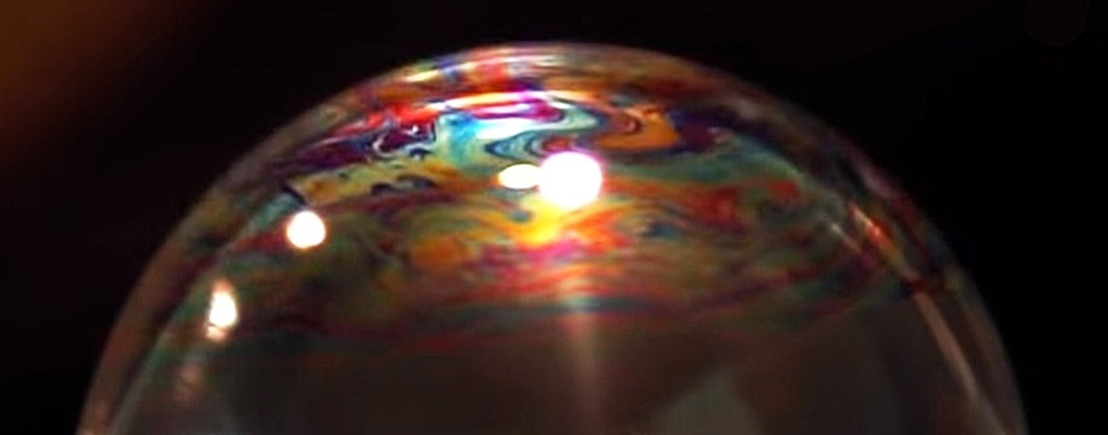
|
What are Soap Bubbles? Soap bubbles are part of our life, so often we ignore them. Kids play with them, so it’s kids’ stuff! In fact, soap bubbles have drawn the attention not only of children but also of chemists, physicists and mathematicians, some as great as Sir Isaac Newton. Soap bubbles are formed when air is trapped inside soap films, sandwiching a thin layer of water between two layers of soap molecules. The polar oxygen-rich hydrophilic end of the soap molecule is attached to water molecule and the nonpolar hydrocarbon chain hydrophobic end repels water (Katz, 2010; Pepling, 2003). Due to the presence of two layers of soap films, light gets reflected off the outer layer and the inner layer leading to constructive and destructive interference. Depending upon the thickness of the soap bubble and the angle of the incident light, soap bubbles display various colors. Sir Isaac Newton studied the interference colors of thin films and made calculations of thin film thickness (Hall, n.d.). He calculated the thickness of soap bubbles at their thinnest point to be 1/2500000 inch or 0.000001016 centimeter. Soap Bubbles and Weather Systems One of the recent developments involving soap bubbles is not only high tech but also significant in terms of its impact on our ability to understand extremely complex tropical weather systems. Researchers have shown that upon heating, soap bubbles generate (Gaussian) vortices and convection currents similar to those naturally occurring in hurricanes and typhoons (Seychelles, Amarouchene, Bessafi, and Kellay 2008; Meuel, Xiong, Fischer, Bruneau, Bessafi, & Kellay, 2013). The variations in thickness at different points of the soap bubble, due to temperature variations, generate surface currents in the bubble similar to atmospheric currents, in addition to producing color displays (Figure 1).
The color displays make it easier to follow the surface currents. Comparison of data from soap bubble-created simulated hurricane systems to data from real hurricanes has shown encouraging similarities supporting the use of soap bubbles as experimental models for understanding weather systems. Something to Think About As noted earlier, it is quite amazing indeed how a simple soap bubble formed by trapped air inside a skin of thin layer of water molecules sandwiched between soap molecules is providing a dependable system to study complex weather systems. Chemistry goes beyond test tubes in chemistry laboratories and boring chemistry lectures in chemistry departments. Whether one knows it or not, soap bubbles bring chemical science to real life. Even meteorologists take soap bubbles seriously. So, next time you see a soap bubble, don’t just ignore it as kids’ stuff. References
ACKNOLEDGMENT: Figure 1 Source - D. Cowern. How to make a hurricane on a bubble. Physics Girl. https://www.youtube.com/watch?v=nXDKCm2dfMs. Used with permission.
|
